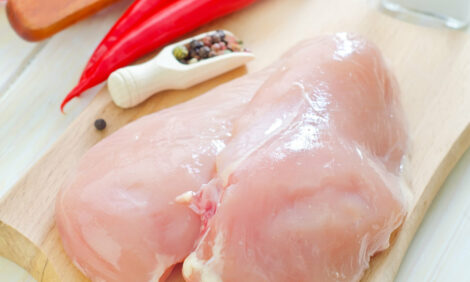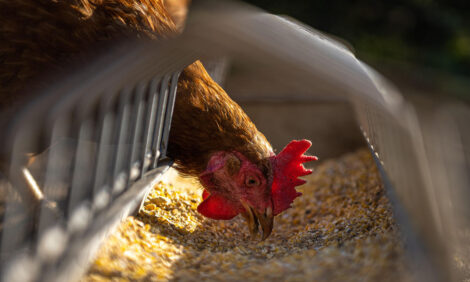



Mash or Pellet? The Question of Genetics
By Jean-Jacques Trevidy, Hubbard Europe - This article evaluates the options of mashing or pelleting broiler feed, and like many choices the broiler producer has, the answer is dependant upon a number of factors (page 2/4).Genetics:
|
|
| Contents/Navigation |
 |
Genetic selection has yielded tremendous progress in weight gain. In the 70's-80's when a higher energy feed, in a pelleted form, was made available it helped to better express the real genetic potential of broilers.
Then, as a consequence of faster growth, problems arose that the primary breeders must now take into account in their selection programmes: skeleton disorders (e.g. lameness) and metabolic disorders (e.g. ascites, sudden death). Lately, the tightening of restrictions regarding the use of antibiotics and coccidiostats has given rise to increased incidence of necrotic enteritis.
Practically, the above problems have mainly been addressed through the implementation of lighting programmes. These aim at slowing down the growth while the birds are young, in order to achieve better skeletal and cardiovascular development, that allows them to sustain later compensatory growth and to decrease the incidence of late mortality. However, the gain in growth potential and therefore in broiler appetite has been such that the lighting programmes were eventually unable to give satisfactorily control. This has been even truer in conditions where the minimum light duration was 16 hours and light intensity was high. Growth control in this case was obtained by quantitative restriction, with controlled feeding schedules (e.g. 2 x 4-5 hours). The use of such techniques showed an improvement in feed efficiency because feed was better digested compared to adlibitum feeding on the one hand, and because late mortality was decreased on the other hand. Obviously proper implementation of the above solutions requires an extremely good level of management and housing conditions.
The field observations are confirmed by scientists like P. Siege] and I. Nir. More recently, B. Svihus from Norway showed that a pelleted wheat based feed presented as a mash following pellet grinding, reduces feed consumption and increases starch digestibility. This is in line with results from Leciercq (1988) and Plavnick (1995), which indicated that the pelleting effect was essentially explained by a higher feed intake. Svihus's work seems to show that pellet over-consumption leads to impaired feed efficiency because of an alteration in feed intestinal flow regulation. Indeed the gizzard may not be able to properly play its regulatory role through its grinding activity; satiety and thus hormonal or nervous communication with the intestine may be impaired.
The practical consequences of this are that:
quantitative restriction of broilers improves feed efficiency because of better regulation of intestinal feed flow.
the gizzard plays a major role in the above feed flow regulation, as long as feed particle size remains coarse.
| PREVIOUS: Introduction | Genetics | NEXT: Feed etc. | Housing |
Source: Hubbard Technical Bulletin - January 2005









